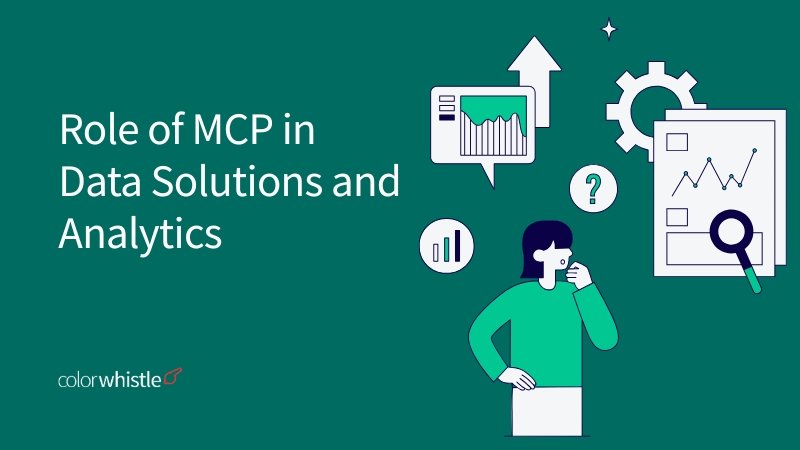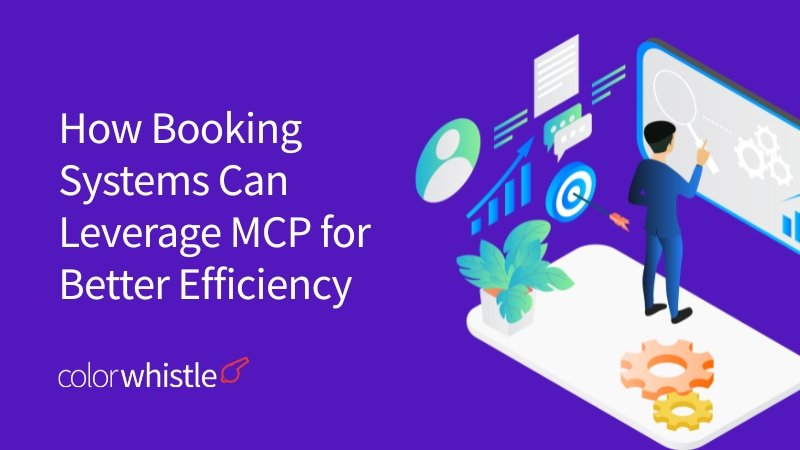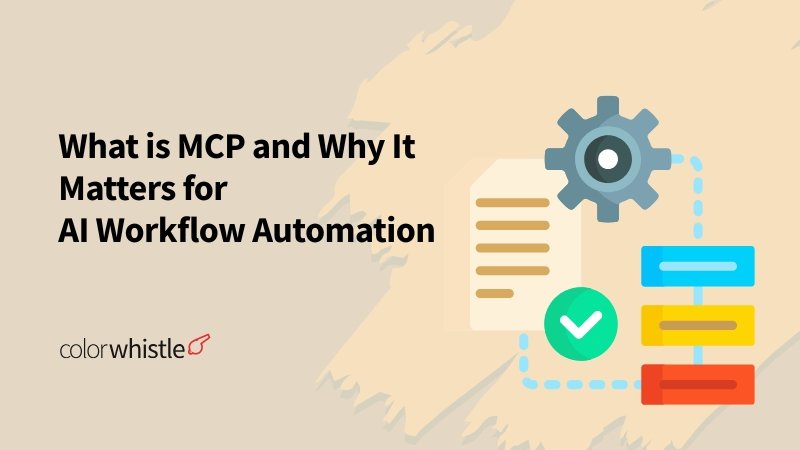The Role of MCP in Data Solutions and Analytics has become increasingly important as businesses seek intelligent, scalable, and automated data environments. Model Context Protocol (MCP) serves as a vital component in modern architectures, allowing AI-driven systems to comprehend the context and meaning of various datasets across intricate infrastructures.
Challenges in Modern Data Ecosystems
Contemporary data ecosystems encounter obstacles such as:
- Fragmented data sources
- Inconsistent quality
- Growing demand for real-time insights
How MCP Addresses These Challenges
MCP tackles these issues by:
- Centralizing and contextualizing diverse data streams for seamless integration
- Enabling AI assistants to automate routine analytical tasks with contextual awareness
- Supporting robust governance and security within analytics workflows
- Accelerating the development of actionable insights through advanced automation
This article explores the crucial role that MCP plays in transforming data solutions and analytics processes. Key areas of focus include:
- Streamlined data ingestion and cleaning
- Efficient management of AI pipelines
- Creation of user-centric analytics dashboards powered by contextualized insights
By grasping how MCP data reshapes the landscape of AI data pipelines and analytics automation, organizations can unlock new levels of intelligence and operational efficiency. This transformation is not only limited to traditional sectors but is also significantly impacting areas such as Education ERP, where AI-friendly structured data is leading to smarter school management and improved outcomes.
Furthermore, the integration of MCP with technologies like Headless CMS is redefining web development, making it more flexible and efficient. As organizations continue to adopt these advanced technologies, they must also ensure their digital platforms are regularly updated and maintained. Understanding the significance of WordPress maintenance mode will be crucial in this regard, ensuring that websites remain functional while updates are being implemented.
Understanding MCP and Its Core Functions
Model Context Protocol (MCP) is a game-changing component in the structure of contemporary data ecosystems. Essentially, MCP serves as a protocol that enables contextual awareness, the capability of systems to comprehend, interpret, and utilize context from extensive and varied data sources. This understanding of context is crucial for developing intelligent automation and analytics solutions that can flexibly adjust to changing business needs.
What Is MCP?
1. Protocol for Contextualization
MCP standardizes how context is captured, transmitted, and interpreted across data systems. Unlike traditional protocols focused on raw data transfer, MCP embeds semantic metadata, such as source lineage, schema definitions, usage patterns, security policies, and business logic, directly into the flow of information.
2. Dynamic Adaptation
This embedded context allows systems to dynamically adjust processing logic based on real-time factors like user intent, data sensitivity levels, or operational constraints.
Enabling Contextual Awareness in Data Environments
MCP’s design addresses several critical challenges:
- Disparate Data Sources: Organizations frequently operate with fragmented datasets residing in silos. MCP unifies these sources by providing a shared protocol that standardizes how context is communicated between storage solutions, analytics platforms, and downstream applications.
- Natural Language Interaction: With MCP enabling contextual awareness, AI assistants can move beyond rigid command structures. For example:
A user can ask an AI assistant for “last quarter’s sales anomalies in the Northeast region,” and MCP ensures the assistant understands what constitutes ‘sales,’ how ‘quarter’ is defined in this context, where ‘Northeast region’ maps in corporate territory databases, and which anomaly detection models are relevant for this dataset.
Impact on AI Assistants and Analytics Tools
The introduction of the Model Context Protocol brings significant improvements to both AI assistants and analytics tools:
- Enhanced Interpretation: Analytics tools equipped with MCP can automatically disambiguate user requests by interpreting metadata and historical usage patterns.
- Automated Decision Support: By leveraging contextual signals, AI assistants surface more relevant insights with reduced manual tuning. For instance:
- Choosing optimal feature sets for predictive models
- Applying correct access controls based on organizational roles
- Adjusting visualization types according to audience preferences
This deep integration of contextual awareness through the Model Context Protocol unlocks new capabilities for interpreting complex data environments. Systems become not only smarter but also more adaptive to evolving business needs, a foundational asset as organizations scale their analytics ambitions.
1. Data Ingestion and Cleaning with MCP
Efficient data ingestion and robust cleaning processes are essential for any high-functioning analytics environment. The Model Context Protocol (MCP) has emerged as a key solution in addressing the challenges associated with integrating large amounts of data from various sources and ensuring its quality from the beginning.
Seamless Data Ingestion Across Different Systems
Organizations today rely on data coming from many different platforms, transactional databases, IoT devices, cloud applications, legacy systems, and external APIs. MCP provides a unified protocol that simplifies these complexities by:
- Standardizing data interfaces: MCP defines common formats and communication standards, reducing the friction traditionally encountered when ingesting heterogeneous datasets.
- Dynamic schema mapping: Through contextual awareness, MCP can automatically recognize and map differing source schemas to a central model, minimizing manual intervention.
- Real-time integration: Native support for streaming and batch ingestion ensures that both high-frequency telemetry and bulk historical records are captured without latency or loss.
An example involves public safety organizations gathering incident data from dispatch logs, sensor networks, and 911 call records, each source with unique formats and update frequencies. MCP streamlines this process so all feeds converge seamlessly within a centralized analytics platform.
Automated Cleaning for High-Quality Data
Raw ingested data is often noisy, incomplete, or inconsistently formatted. MCP addresses these issues by embedding contextual intelligence into cleaning workflows:
- Automated error detection: Utilizing metadata awareness, MCP identifies anomalies such as out-of-range values or missing fields during ingestion.
- Contextual enrichment: The protocol enriches incoming records using reference datasets, such as geocoding addresses or normalizing categorical labels, improving downstream analytics accuracy.
- Rule-driven transformation: Predefined business rules and machine learning models embedded in MCP can automatically standardize units of measure, resolve duplicates, and flag ambiguous entries for review.
For instance, when ingesting judicial case records from multiple jurisdictions with different naming conventions, MCP’s contextual rules harmonize field names and correct typographical errors before analysis begins.
Data pipelines powered by MCP thus not only accelerate the integration of diverse sources but also ensure that the resulting datasets are clean, consistent, and ready for advanced analytical workflows. This foundation is critical for building reliable AI models and actionable dashboards in subsequent stages of the analytics lifecycle.
2. Managing AI Pipelines Efficiently Using MCP
Optimizing AI pipeline management requires a system that can orchestrate complex processes while adapting to evolving data and model requirements. The Model Context Protocol (MCP) introduces a robust framework for contextual understanding, which fundamentally transforms how AI pipelines are constructed, executed, and maintained.
Contextual Coordination Across Pipeline Stages
MCP provides a shared context layer that bridges the gap between disparate pipeline components, such as:
- Feature Engineering: MCP dynamically interprets incoming data schemas and metadata, enabling automated feature selection and transformation. By understanding the context of both raw and derived features, MCP ensures consistency throughout the preprocessing steps.
- Model Training: During training stages, MCP supplies models with real-time contextual cues, such as changes in data distribution or business logic, that help optimize hyperparameter tuning and algorithm selection. This adaptability reduces retraining overhead by triggering targeted updates only when relevant context shifts occur.
- Deployment & Monitoring: As models move to production, MCP maintains lineage and versioning context, linking model artifacts to their originating datasets and processing logic. This linkage supports seamless rollbacks or upgrades based on active feedback from live telemetry.
Enhanced Automation and Observability
Automation in AI pipeline management is amplified when MCP’s protocol-driven intelligence is embedded within orchestration tools:
- Automated Dependency Resolution: MCP traces dependencies between data sources, transformation scripts, and model binaries, resolving conflicts before they impact downstream tasks.
- Intelligent Resource Allocation: By synthesizing pipeline telemetry data, MCP makes recommendations for resource scaling or load balancing to optimize compute usage during peak training or inference workloads.
Example: Cross-Component Synchronization
Consider a scenario where new data attributes are ingested into a system. Without MCP, downstream feature engineers or data scientists may remain unaware of these schema changes until failures occur. With MCP in place:
Any schema evolution instantly updates the contextual map accessible to all pipeline nodes, triggering automated retraining schedules or prompting dashboard alerts for manual intervention.
Security-Conscious Pipeline Governance
MCP respects role-based access controls at each stage of the pipeline. Contextual awareness ensures that sensitive models or datasets are only accessible to authorized services or personnel, reducing risks of data leakage during automated workflows.
With this architecture in place, organizations experience fewer bottlenecks between experimentation and production deployment. AI solutions become more adaptive, resilient, and transparent across the full lifecycle, from raw data ingestion through real-time inference at scale. Such advancements in AI capabilities can be further leveraged through specialized services like those offered by ColorWhistle, a reputed AI app development company known for its expertise in creating next-gen mobile/web applications with artificial intelligence.
3. Building Effective Analytics Dashboards Powered by MCP-enabled Insights
Modern analytics dashboards demand more than surface-level data visualizations, they require contextualized, actionable insights that empower decision-makers. MCP (Model Context Protocol) plays a critical role in this transformation by infusing analytics dashboards with rich context, real-time relevance, and operational intelligence.
Contextualized Insights for Informed Decision-Making
MCP enables dashboards to go beyond static reporting:
- Dynamic Data Interpretation: By continuously synthesizing telemetry and metadata from disparate sources, MCP ensures that every dashboard element reflects the most current state of the business environment.
- Relevance Through Context: Dashboards powered by MCP adapt to user roles, permissions, and historical interactions. For example, a finance manager might see risk indicators contextualized by current market conditions, while an operations lead could receive alerts based on live inventory fluctuations.
Enhanced User Experience and Interactivity
User-friendly analytics dashboards are essential for broad adoption across organizations. MCP contributes to this by:
- Natural Language Exploration: Users interact with dashboards using conversational queries, which are translated into precise data operations through MCP’s contextual understanding.
- Personalization at Scale: The protocol tailors visualizations and metrics according to user intent and organizational policies without manual customization or code changes.
- Real-Time Actionable Alerts: By integrating predictive analytics and anomaly detection directly into the dashboard experience, MCP ensures users are promptly notified of critical events or trends.
Driving Business Value with Intelligent Dashboards
Organizations derive measurable value by leveraging MCP-enabled insights within their analytics dashboards:
“With MCP-driven dashboards, our executive team shifted from retrospective reporting to proactive operational management, unlocking new efficiencies across our supply chain.”, Chief Data Officer, Fortune 500 Retailer
Key business impacts include:
- Accelerated time-to-insight for critical decisions
- Improved accuracy in forecasting and risk assessment
- Reduced operational overhead through automation of routine analysis
The ability to present context-rich information visually positions analytics dashboards as true instruments of strategic value, not just repositories of historical data. This integration of contextual intelligence sets a robust foundation for the next evolution in data-driven business applications.
Furthermore, integrating advanced SEO strategies such as White Label SEO into these analytics dashboards can further enhance their effectiveness. This approach allows businesses to leverage SEO for improved online visibility while maintaining control over their brand’s narrative.
Real-World Applications: Public Safety Analytics Case Study
Public safety organizations face unique data challenges: different systems, large amounts of data, and the urgent need for actionable intelligence. The following public safety analytics case study demonstrates how MCP can turn these challenges into operational advantages.
Case Study: Using MCP for Public Safety Data Integration and Insight
A large city public safety agency wanted to improve its analytics capabilities. The goal was to get timely, actionable insights from millions of records, including 911 calls, emergency response logs, incident reports, and community feedback.
Implementation Highlights
- Data Centralization Across Silos: MCP provided a real-time integration layer, bringing together data from CAD (Computer-Aided Dispatch), RMS (Records Management Systems), and other sources (social media feeds, IoT sensors) into a single analytics repository.
- Automated Data Cleaning: Ingested datasets were automatically cleansed using predefined rules. Duplicate entries (e.g., repeated call logs), incomplete reports, and inconsistent field names were fixed without manual intervention.
- Contextualized Analytics Queries: Stakeholders used AI assistants powered by MCP’s contextual awareness. Natural language requests such as “Show trends in overdoses by neighborhood over the last 12 months” or “Identify repeat locations with high-priority calls” generated optimized analytical queries that respected access controls.
- Real-Time Telemetry & Predictive Monitoring: MCP-enabled dashboards combined live data from ongoing incidents. This gave first responders and command staff insights on resource allocation, predicting increases in call volumes or hotspot emergence during large public events.
Key Outcomes
- Faster Incident Pattern Recognition: Probabilistic matching algorithms identified emerging crime patterns and recurring public health issues days earlier than traditional reporting methods allowed.
- Operational Agility: Decision-makers received targeted recommendations for patrol adjustments and resource redeployment based on changing situational context.
- Enhanced Transparency & Governance: MCP ensured sensitive information was only accessible to authorized personnel, maintaining compliance with privacy regulations while enabling broad analytic reach.
“The adoption of MCP has fundamentally changed our approach to data-driven policing, turning raw incident records into real-time intelligence we can act on.”, Chief Data Officer, Municipal Public Safety Agency
This case study shows how MCP can help extract important insights from complex situations where quick decisions can save lives.
The smooth integration of contextual protocols isn’t limited to public safety; similar advantages are being seen in judicial analytics and financial fraud detection areas.
The Future of Data Solutions: Embracing the Power of MCP
The world of data solutions is changing quickly. This change is mainly due to the huge amounts of data being generated, the complexity of this data, and the need for instant insights that can be acted upon. Businesses now have to use systems that allow for smart automation, strong security, and flexible analysis on a large scale. In this scenario, protocols like MCP (Model Context Protocol) are set to become essential in the data ecosystems of the future.
Key Factors Influencing Data Solutions
Several key factors are shaping the future of data solutions:
- Continuous Data Growth: There is an increasing number and variety of sources generating data in enterprises. This growth drives the need for tools that can seamlessly integrate, understand, and analyze different datasets.
- AI-Driven Decision-Making: The use of machine learning and AI for making predictions and optimizing operations requires a protocol that can embed context into every analytical process.
- Cloud-Native Architectures: With more businesses moving to the cloud, there is a critical need for context-aware management across various systems to ensure performance, compliance, and flexibility.
How MCP Fits into the Future of Data Solutions
MCP addresses these challenges with its features that anticipate future needs:
Contextualization at Scale
- MCP acts as an intelligent layer that enables AI systems not only to process raw data but also to interpret its meaning within varying operational contexts.
- This contextual awareness empowers analytics platforms to adapt their behavior dynamically based on evolving business needs or regulatory environments.
Intelligent Automation
- Automated management of tasks such as data collection, cleaning, transformation, and analysis becomes possible through MCP’s unified understanding of metadata and operational intent.
- AI assistants using MCP can reduce manual workload by converting natural language requests into actionable analytic workflows.
Secure Collaboration Across Boundaries
- As organizations work together across different departments or with external partners, MCP ensures secure access controls while allowing shared insights—this is especially important for regulated industries like finance or healthcare.
Charting a Path Toward Context-Aware Analytics
Data solutions that are prepared for the future will be judged by how well they can provide quick and dependable insights from large and diverse sources of information without compromising governance or efficiency. The role of MCP in Data Solutions and Analytics positions it as a core enabler, supporting adaptable AI pipelines, real-time observability, and smooth integration across different environments.
As new applications arise, such as predictive maintenance in industrial IoT or advanced healthcare diagnostics, the flexibility and contextual intelligence offered by MCP will drive innovation in ways that traditional data management protocols cannot achieve.
Conclusion
Embracing the Role of MCP in Data Solutions and Analytics positions organizations as leaders in innovation and operational excellence. MCP stands out as a strategic enabler, bridging gaps between disparate data sources, democratizing access to analytics, and embedding contextual intelligence into every stage of the data lifecycle.
Key benefits realized through MCP adoption include:
- Accelerated development cycles: Automated workflows and contextual AI drastically reduce time-to-insight and solution deployment.
- Improved decision-making: Context-aware analytics ensure that insights are both accurate and relevant, empowering stakeholders across the enterprise.
- Enhanced governance and security: MCP’s respect for account boundaries and permissions guarantees secure analytics within highly regulated environments.
- Future-proof scalability: Seamless integration with advanced AI/ML tools supports ongoing growth, adaptability, and innovation.
“MCP transforms raw data into actionable intelligence by placing context at the core of every analytical process.”
Organizations prioritizing MCP adoption are setting new standards for agility, responsiveness, and competitive differentiation. As digital ecosystems grow in complexity, those leveraging MCP will be best equipped to harness the full potential of their data assets, driving sustained value creation in an increasingly fast-paced digital world.
tIn this context, partnering with a reliable web development company like ColorWhistle can further enhance these efforts. Their expertise in custom web design, website development, and digital marketing services can provide the necessary infrastructure to support the successful implementation of MCP.
Moreover, incorporating high-quality visual elements into your data solutions can significantly improve user engagement and comprehension. This is where hiring a graphic designer from ColorWhistle could be beneficial. Their remote dedicated graphic designers offer monthly dedicated graphic design works & services which can help in creating impactful digital ads and other creative designs tailored to your specific needs.
FAQs (Frequently Asked Questions)
What is MCP, and why is it important in modern data solutions and analytics?
MCP, or Model Context Protocol, is a protocol designed for contextual understanding within data systems. It plays a crucial role in modern data environments by enhancing data ingestion, cleaning, AI pipeline management, and the creation of effective analytics dashboards, leading to improved insights and decision-making.
How does MCP facilitate seamless data ingestion and cleaning processes?
MCP enables seamless data ingestion from diverse sources by providing contextual awareness that supports automated cleaning mechanisms. This ensures high data quality and integrity throughout the ingestion process, which is vital for accurate analytics and reliable AI outcomes.
In what ways does MCP improve the management of AI pipelines?
MCP streamlines AI pipeline management by supplying contextual information at every stage, from feature engineering to model training and deployment. This enhanced coordination between components leads to more efficient pipeline operations and better overall performance of AI systems.
How can MCP-driven insights enhance analytics dashboards?
By leveraging contextualized insights derived from MCP-driven processes, organizations can build impactful and user-friendly analytics dashboards. These dashboards provide actionable intelligence that drives business value through clearer visualization and deeper understanding of complex data.
Can you provide an example of a real-world application where MCP has been instrumental?
A notable case study involves public safety analytics, where MCP has been instrumental in extracting actionable insights from large volumes of safety-related data. This application demonstrates how MCP enhances data interpretation to support critical decision-making in public safety contexts.
What is the future outlook for data solutions with the adoption of MCP?
The future of data solutions is moving towards more intelligent, efficient, and context-aware systems. Embracing technologies like MCP paves the way for accelerated development cycles, improved decision-making, and innovation, enabling organizations to gain a competitive edge in today’s fast-paced digital landscape.





